#TBT Throwback Thursday’s Feature is “A Comparison of the Three Phases of the High Line, New York City: A Landscape Architect and Photographer’s Perspective” – a 14-Part Series
By Steven L. Cantor, Landscape Architect
14-Part Series Originally Posted December 19, 2013 through February 27, 2015 – see all below
All Photos © Steven L. Cantor
“A Comparison of the Three Phases of the High Line, New York City: A Landscape Architect and Photographer’s Perspective” compares Phase One with Phase Two, and describes what is proposed for Phase Three. Design features to be reviewed include the walk system, seat furnishings, plantings, signage and graphics, water feature and drinking fountains, public art, lighting, maintenance and irrigation, and Phase 3. The author also offers suggestions on economic impacts, restrictions and user activities, sustainability, and studies/research.
Originally, due to the length and photo essay nature of the contribution, the series was presented approximately every few weeks in 14 parts between 2013 and 2015; to ensure background information, the Series Introduction is repeated on all.
Inaugural Landscape Editor Column & Series Introduction
Originally Posted December 19, 2013

Phase One High Line on July 15, 2009.
Designed by landscape architect James Corner of Field Operations, architect Ricardo Scofidio of Diller Scofidio + Renfro with planting design by Piet Oudolf, the High Line, the remarkable linear park built on an abandoned railroad viaduct in New York City, has been enormously popular.
The design team anticipated how well green roof technology would function and adapt to the viaduct since it could handle at once the huge weight of several fully-loaded trains carrying heavy tonnage. As an intensive green roof, it has very few structural load limits which would curtail use. At peak use times there can be lines of pedestrians waiting to enter with as many as 20,000 visitors per day on weekends.[1]
The High Line has won numerous awards, and in particular several as a green roof, for example, in 2013 and 2010 from the American Society of Landscape Architects, Green Roofs for Healthy Cities in 2011, and in 2010 from the International Green Roof Association. This is a rare public project in which the success of the initial phase contributed to a high level of funding for subsequent phases.
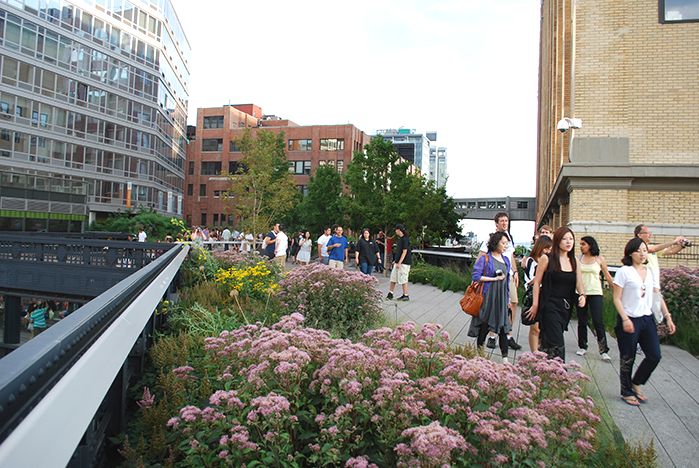
7.16.11.
The High Line has benefited from intense scrutiny as a result of lectures in which the designers were questioned; public hearings, media critiques in newspapers, journals, and blogs; lobbying from specific organizations, such as the Rainforest Coalition; and comments from city government and other public officials.
Improvements or adjustments were implemented to some design elements of the first phase, and significant modifications were done in the second phase. Are these changes aesthetic, appropriate and ethical, and are they consistent with the goals of sustainability? Is the High Line a sustainable design?
Introduction
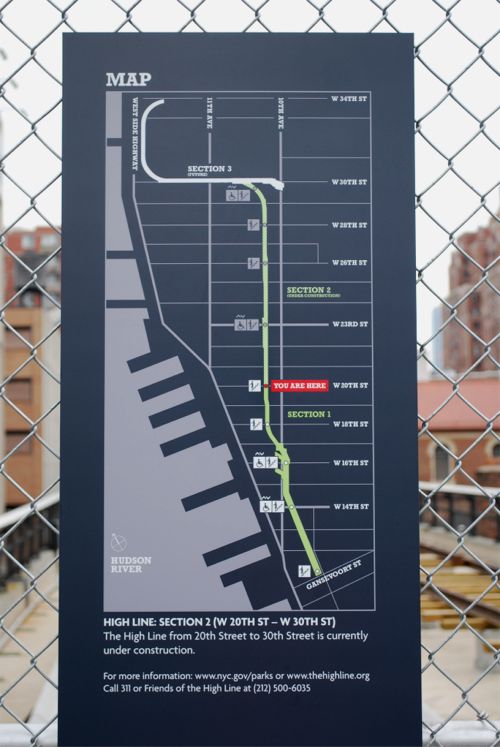
See the updated High Line Map and Neighborhood Context Map at The High Line website.
The first phase of the High Line (from Gansevoort to 20th Street) opened in June, 2009, and is about 0.5 mile (0.83 km) long. The second phase (from 20th Street to 30th Street) of about the same length opened in June, 2011 so that the total length is now 1 mile (1.65 km). Final planning and construction for a third and final phase, which will link the High Line to the development of the rail yards and the convention center on the west side of Manhattan, is under way, and is scheduled to open in 2014. The total estimated cost of all three phases is $172 million with the third phase at $90 million; and the length of the entire route will be 1.45 miles (2.33 km).[2]
The most dynamic section of the first phase of the High Line slices through the Chelsea neighborhood at an angle, purposely bringing visitors to the edge of the trestle platform, which varies considerably in width (30 to 88 feet), and engages them with the diverse architecture of a mixed use neighborhood by using an integrated vocabulary of complex elements.
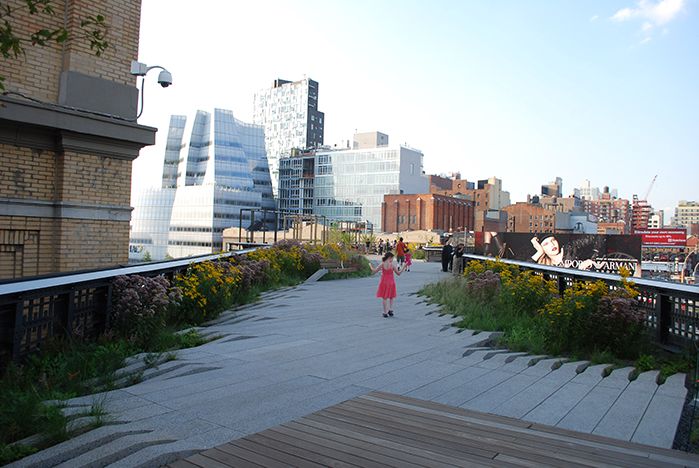
Phase One, 8.03.09.
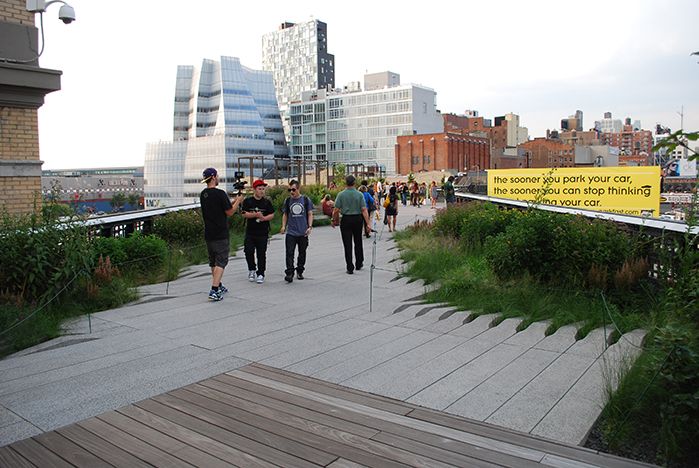
The ipe wood deck by the Tenth Avenue Square juts into the High Line alignment as it crosses through Chelsea at an angle; 6.25.12.
One moves through a sequence of difference spaces, each varying in style, character, and the nature of the plantings. The walks are a system of concrete planks with open joints interlocking like the tines of a fork with the former railroad tracks, which were disassembled and then rebuilt within the park.
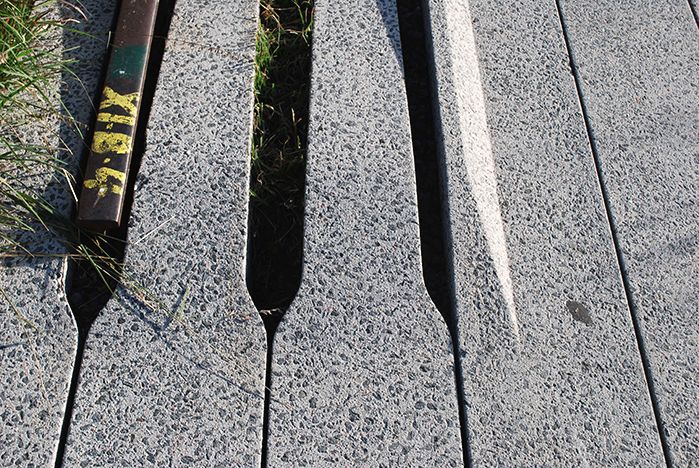
9.25.09.
Horticultural displays of spectacular perennials, shrubs and trees dominate. A diverse palette is used, primarily of native trees, shrubs, grasses and perennials, with a range of textures and colors, and adaptable to a harsh, exposed environment.
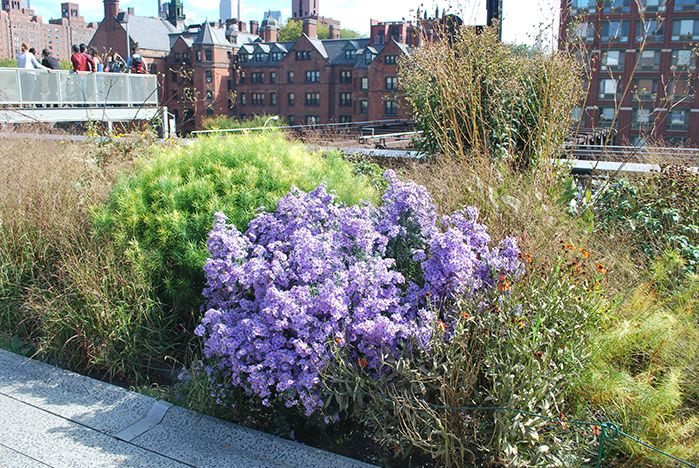
10.14.13.
The second phase route runs parallel to Tenth Avenue, one of the principal north-south traffic arteries. The corridor is less variable in width and often narrower than in the first phase. The second phase route is also farther from the Hudson River, which forms a dramatic backdrop to some of the first phase design.
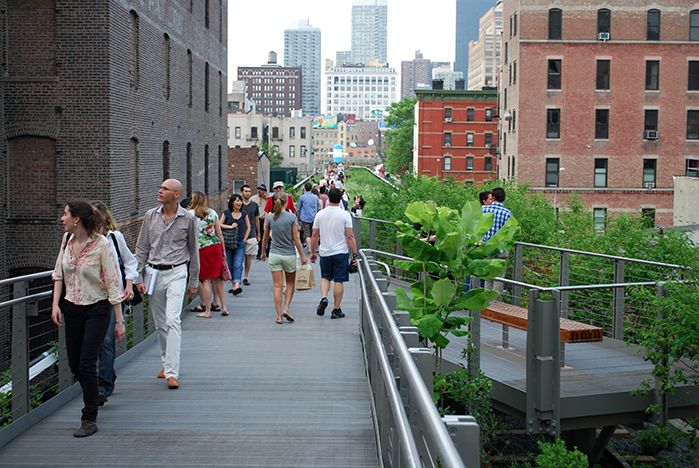
Phase Two, the Falcone Flyover, with the 26th Street Viewing Spur above; 6.10.11.
About one third of the second phase is elevated about 8 feet (2.5 meters) above the planting beds below, so that pedestrians walk on a metal structure called the Philip A. and Lisa Maria Falcone Flyover. Its alignment is gracefully off center, resulting in planting beds on the east side that are about three times wider than those on the west.
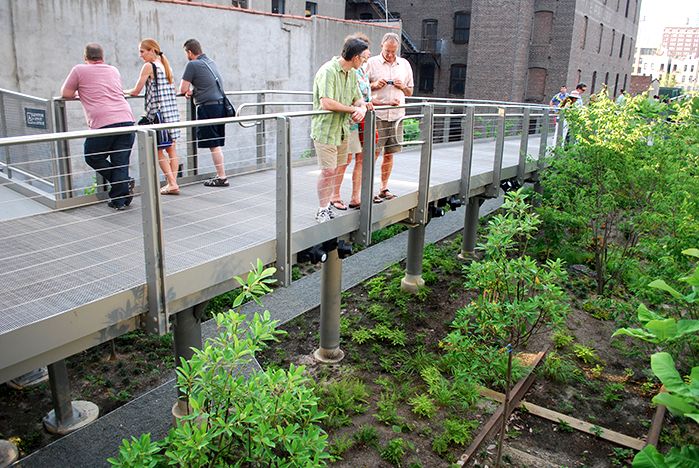
7.16.11.
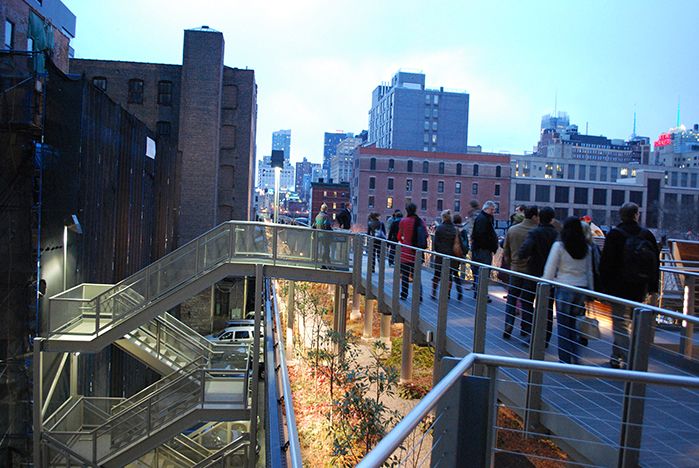
2.18.12.
Except for some tree species, such as magnolias, amelanchier and sassafras still becoming established, visitors look down on the vegetation rather than see it at eye level. As the vegetation has grown, the effect is of walking through the upper story of a young forest, and descending back to the “forest floor” as either end of the skyway meets the existing elevation of the trestle.
That’s it for now. I hope that these different sections of text and images of the High Line will generate discussion.
Come back next week for Part 1 of “A Comparison of the Three Phases of the High Line, New York City: A Landscape Architect and Photographer’s Perspective” where I’ll discuss the Walk System.
Steven L. Cantor
Photos © Steven L. Cantor are available for individual purchase.
Cumulative 14-part Series End-notes
1. Ulam, Alex. “Back on Track,” Landscape Architecture Magazine. Volume 99, No. 10, October, 2009, p. 97.
2. http://www.thehighline.org/news/2012/01/24/major-milestone-for-the-high-line-at-the-rail-yards
Publisher’s Note:
See Steven L. Cantor’s ENTIRE 14-part “A Comparison of the Three Phases of the High Line, New York City: A Landscape Architect and Photographer’s Perspective” Series individually below:
Part 5 – Water Feature & Drinking Fountains
Part 8 – Maintenance & Irrigation
Part 11 – Restrictions and User Activities & Sustainability
Part 13 – Phase Three As-built
To bring readers up to date, read the Visitor Info from the High Line website for new happenings and download the new free app.
Steven L. Cantor, Landscape Architect
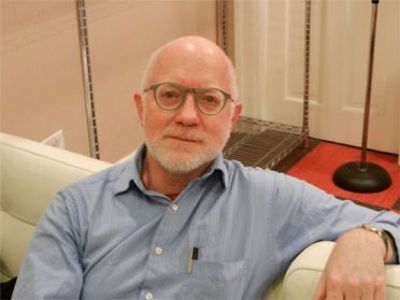
Photo by Thomas Riis.
Steven L. Cantor is a registered Landscape Architect in New York and Georgia with a Master’s degree in Landscape Architecture from the University of Massachusetts, Amherst. He first became interested in landscape architecture while earning a BA at Columbia College (NYC) as a music major. He was a professor at the School of Environmental Design, University of Georgia, Athens, teaching a range of courses in design and construction in both the undergraduate and graduate programs. During a period when he earned a Master’s Degree in Piano in accompanying, he was also a visiting professor at the College of Environmental Design at the University of Colorado, Boulder. He has also taught periodically at the New York Botanical Garden (Bronx) and was a visiting professor at Anhalt University, Bernberg, Germany.
He has worked for over three decades in private practice with firms in Atlanta, GA and New York City, NY, on a diverse range of private development and public works projects throughout the eastern United States: parks, streetscapes, historic preservation applications, residential estates, public housing, industrial parks, environmental impact assessment, parkways, cemeteries, roof gardens, institutions, playgrounds, and many others.
Steven has written widely about landscape architecture practice, including two books that survey projects: Innovative Design Solutions in Landscape Architecture and Contemporary Trends in Landscape Architecture (Van Nostrand Reinhold, John Wiley & Sons, 1997). His book Green Roofs in Sustainable Landscape Design (WW Norton, 2008), provides definitions of the types of green roofs and sustainable design, studies European models, and focuses on detailed case studies of diverse green roof projects throughout North America. In 2010 the green roofs book was one of thirty-five nominees for the 11th annual literature award by the international membership of The Council on Botanical & Horticultural Libraries for its “outstanding contribution to the literature of horticulture or botany.”
Steven’s most recent book is Professional and Practical Considerations for Landscape Design (Oxford University Press, 2020) where he explains the field of landscape architecture, outlining with authority how to turn drawings of designs into creative, purposeful, and striking landscapes and landforms in today’s world.
He has been a regular attendee and contributor at various ASLA, green roofs and other conferences in landscape architecture topics.
In recent years Steven has had more time for music activities, as a solo pianist and accompanist. In 2011 he performed a solo piano program at the Winter Rhythms festival at Urban Stages Theater. He’s a regular performer at musicales hosted in Chelsea and other settings in Manhattan. On August 25, 2013, Leonard Bernstein’s birthday, he performed with Stephen Kennedy Murphy a program of excerpts from the composer’s MASS and Anniversaries.
Steven joined the Greenroofs.com editorial team in December, 2013 as the Landscape Editor. In February, 2015 he completed his 14-part series “A Comparison of the Three Phases of the High Line, New York City: A Landscape Architect and Photographer’s Perspective.”
 Greenroofs.comConnecting the Planet + Living Architecture
Greenroofs.comConnecting the Planet + Living Architecture
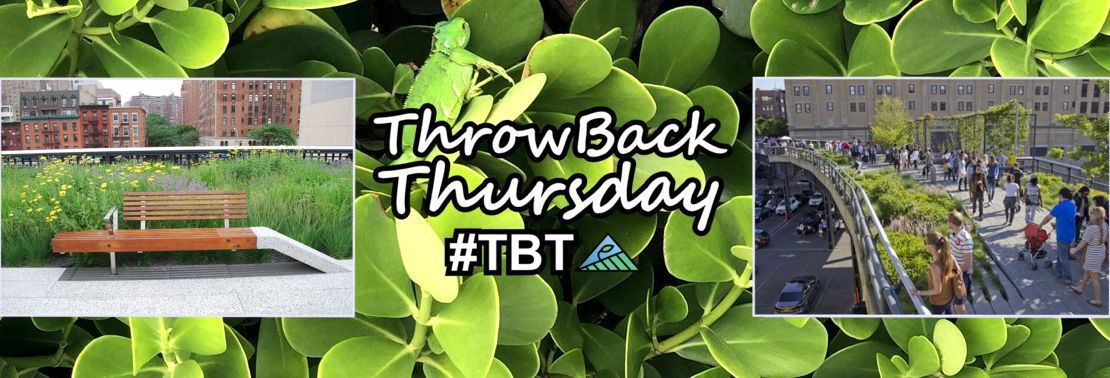

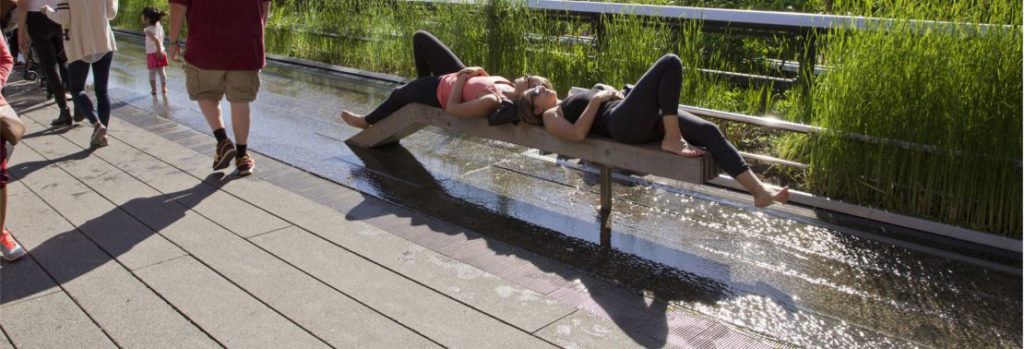
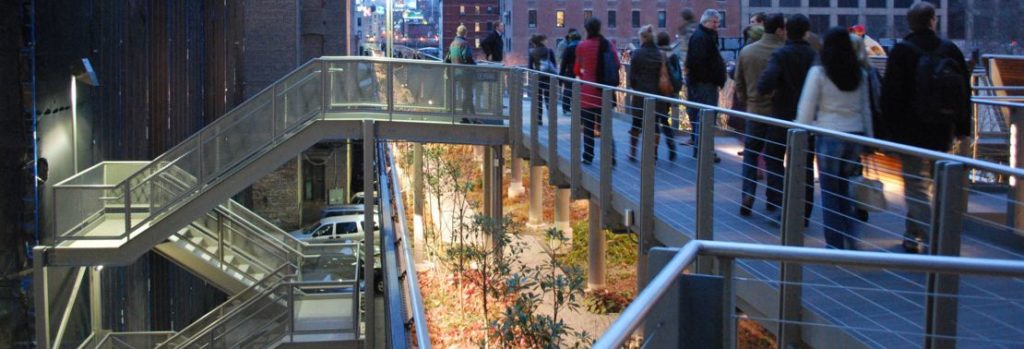
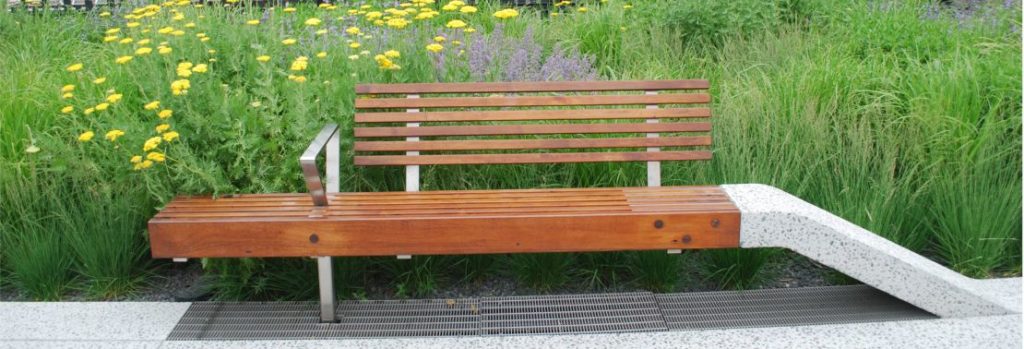
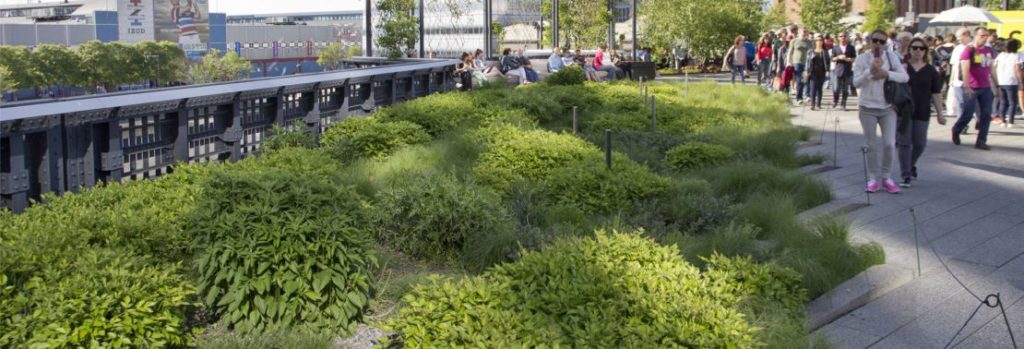




#TBT: Recommended Readings: Professional and Practical Considerations for Landscape Design, Steven L. Cantor | Celestine Design
[…] His critical and experienced eye has produced the excellent 14-part series from 2013-2015 “A Comparison of the Three Phases of the High Line, New York City: A Landscape Architect and Photogra…” as well as other features (see: Copenhagen Green Tour […]